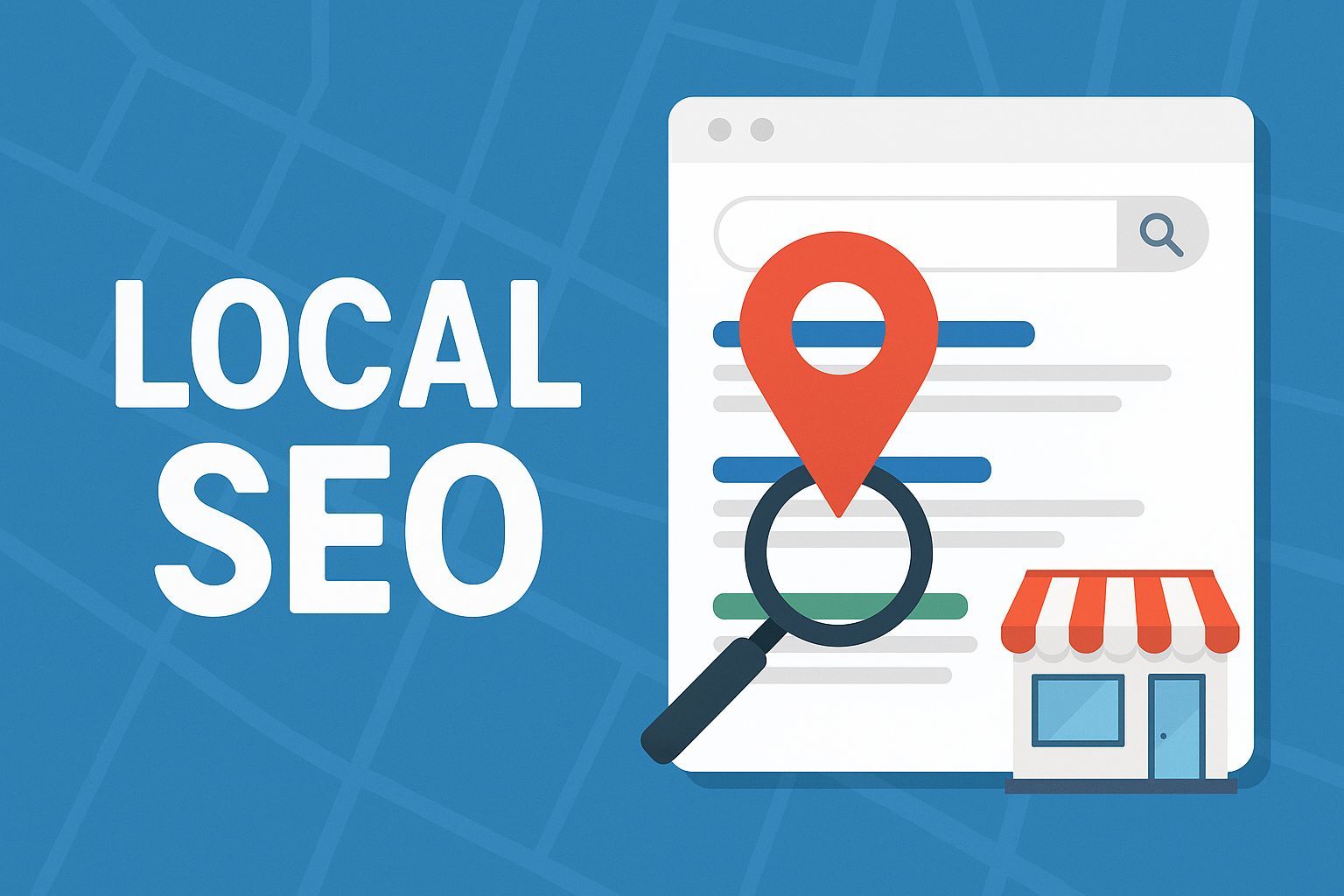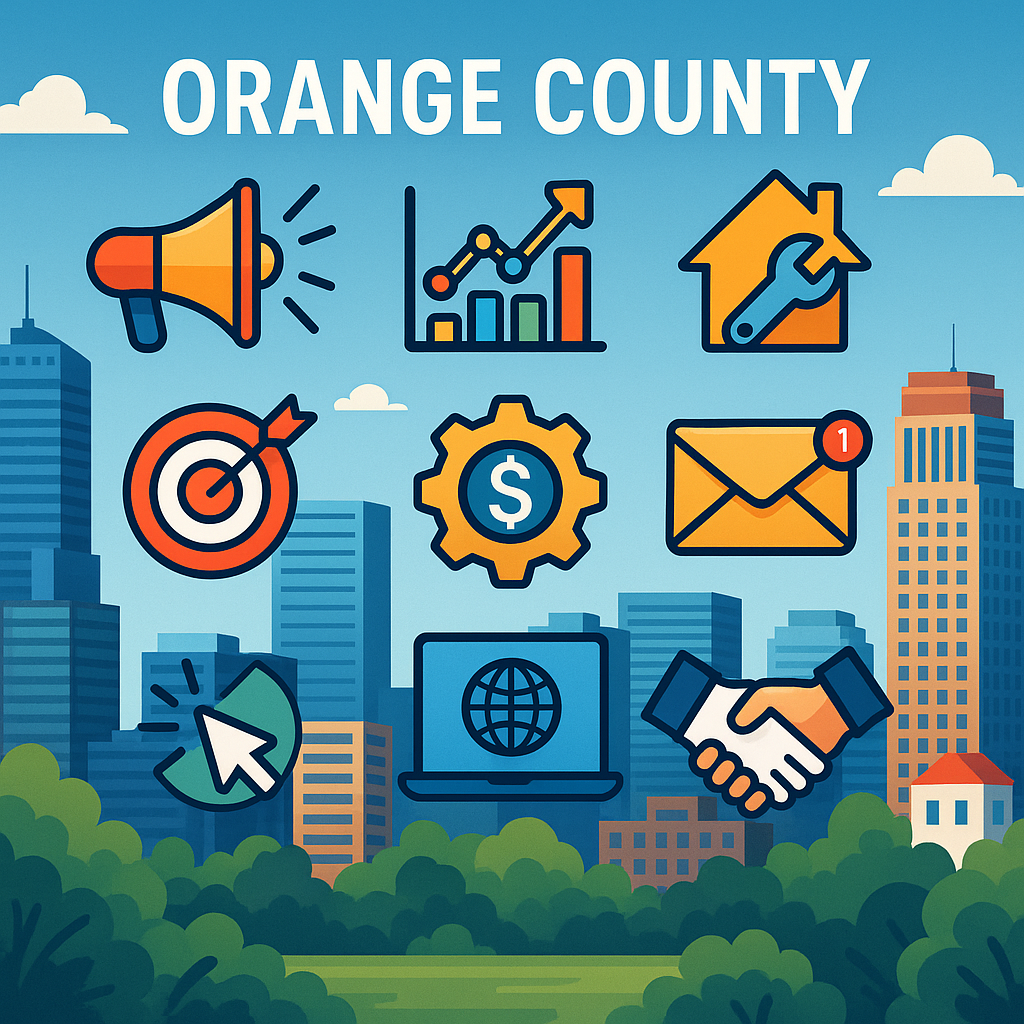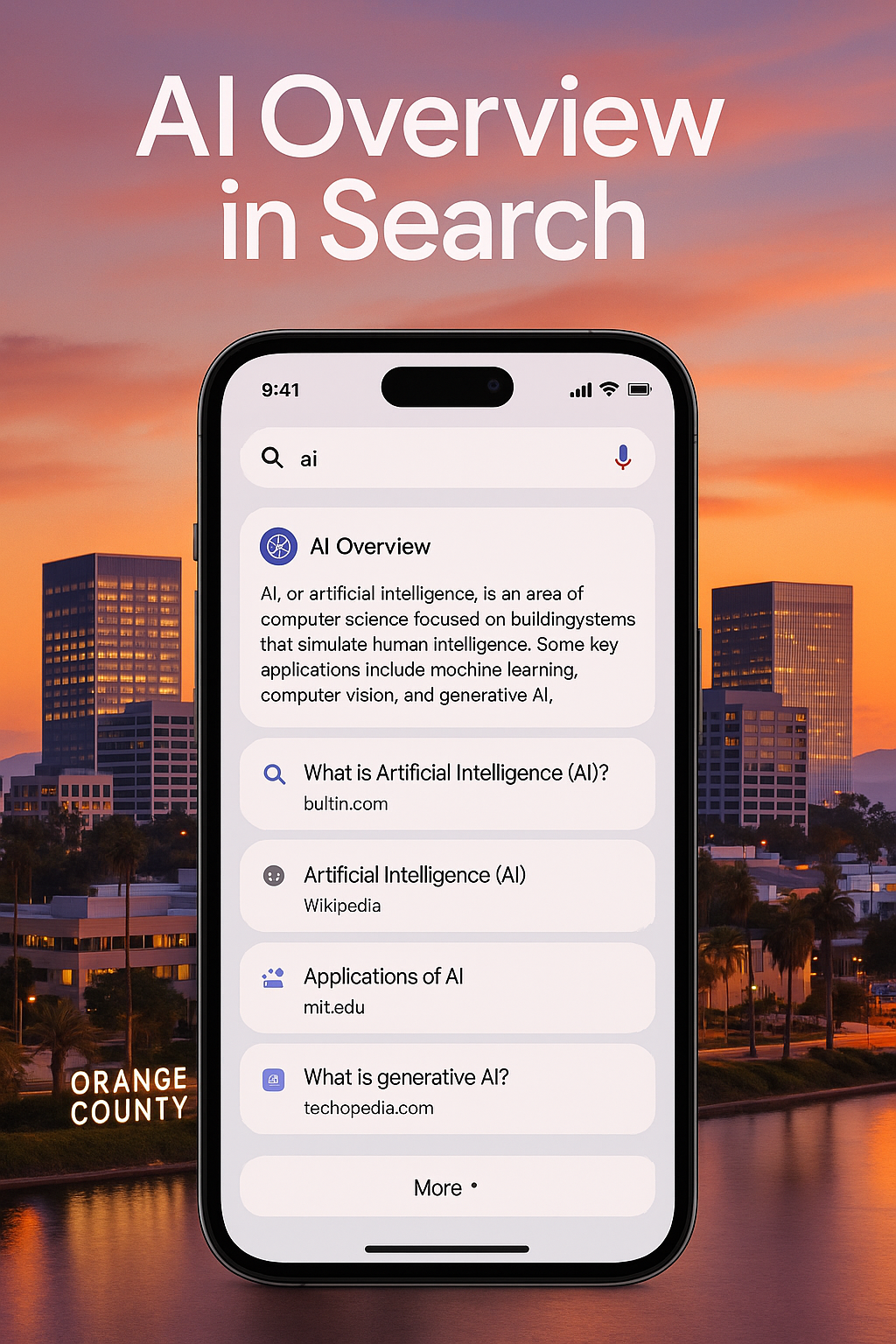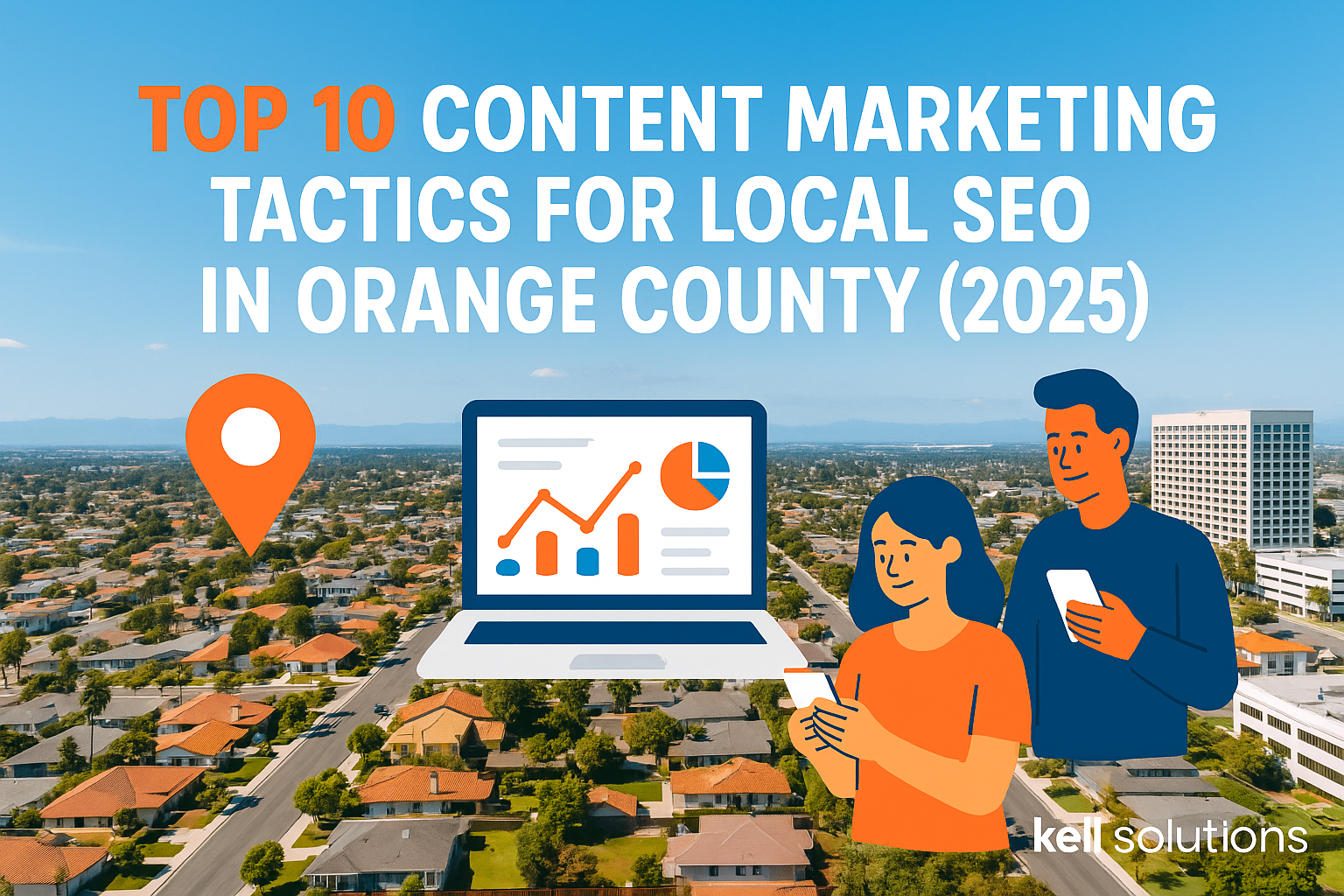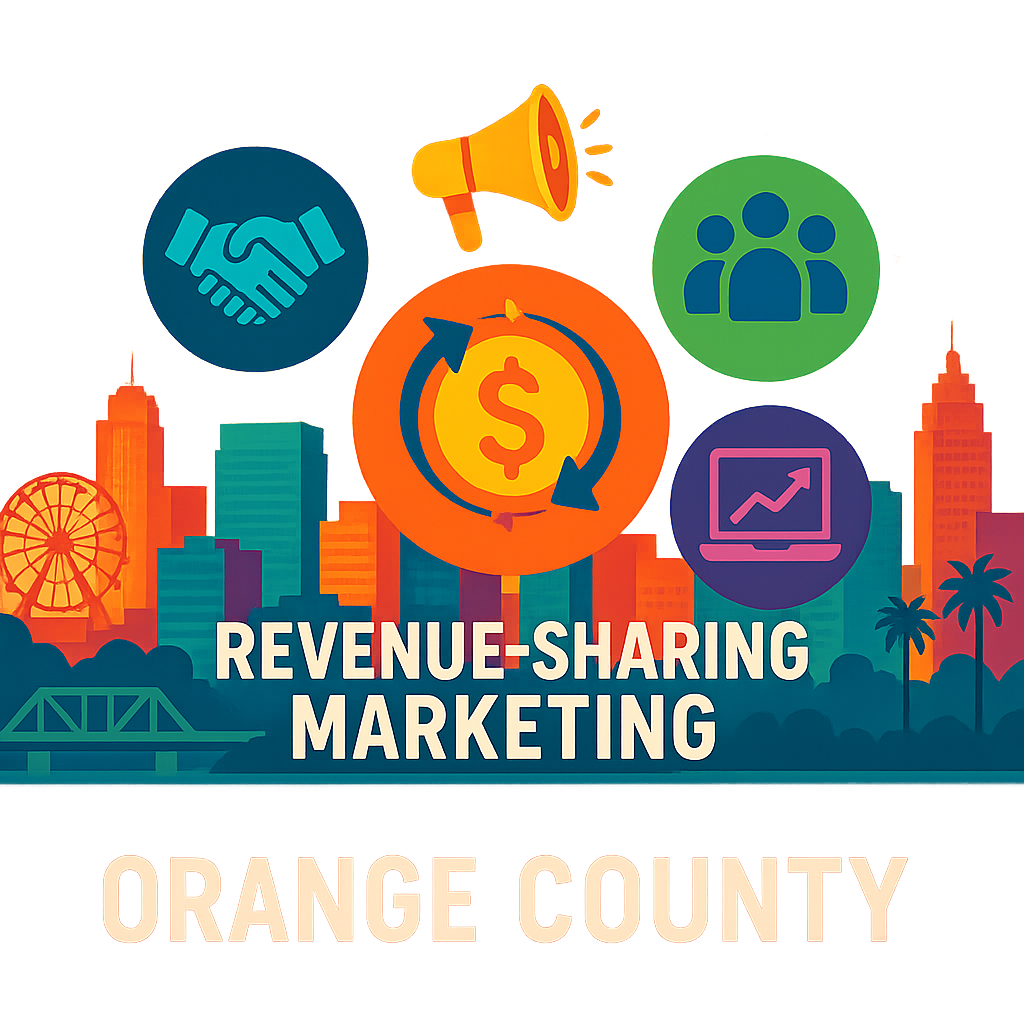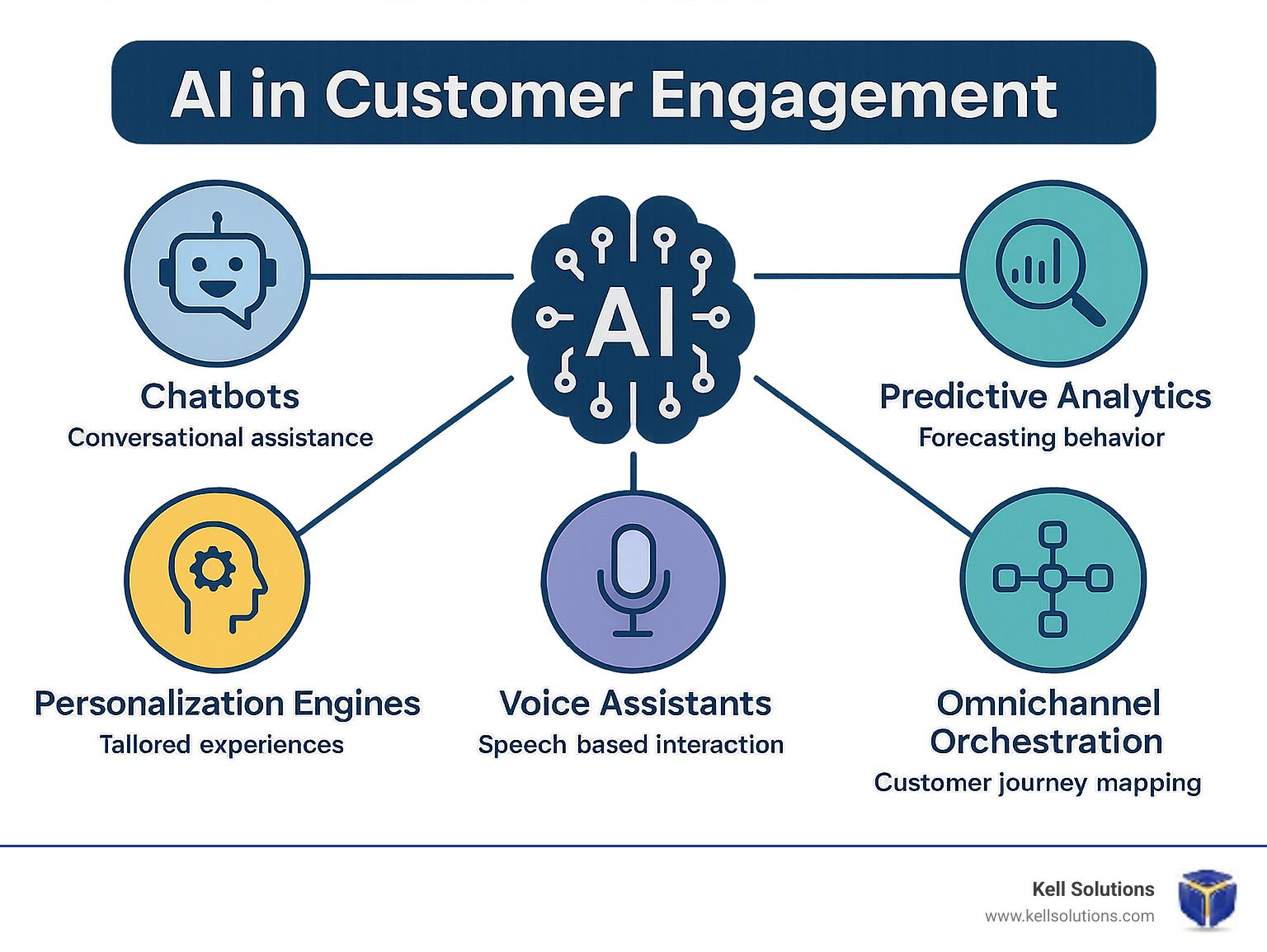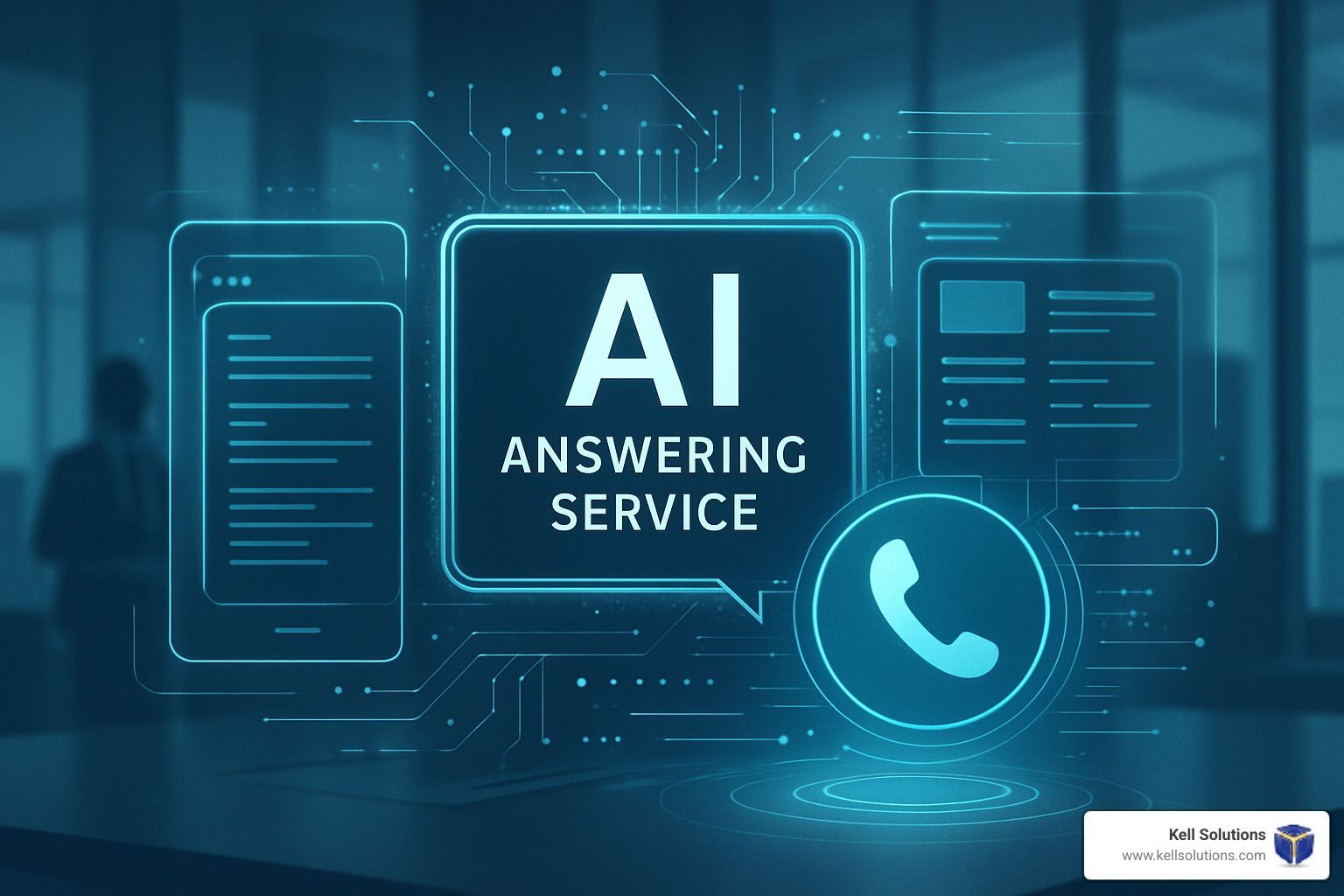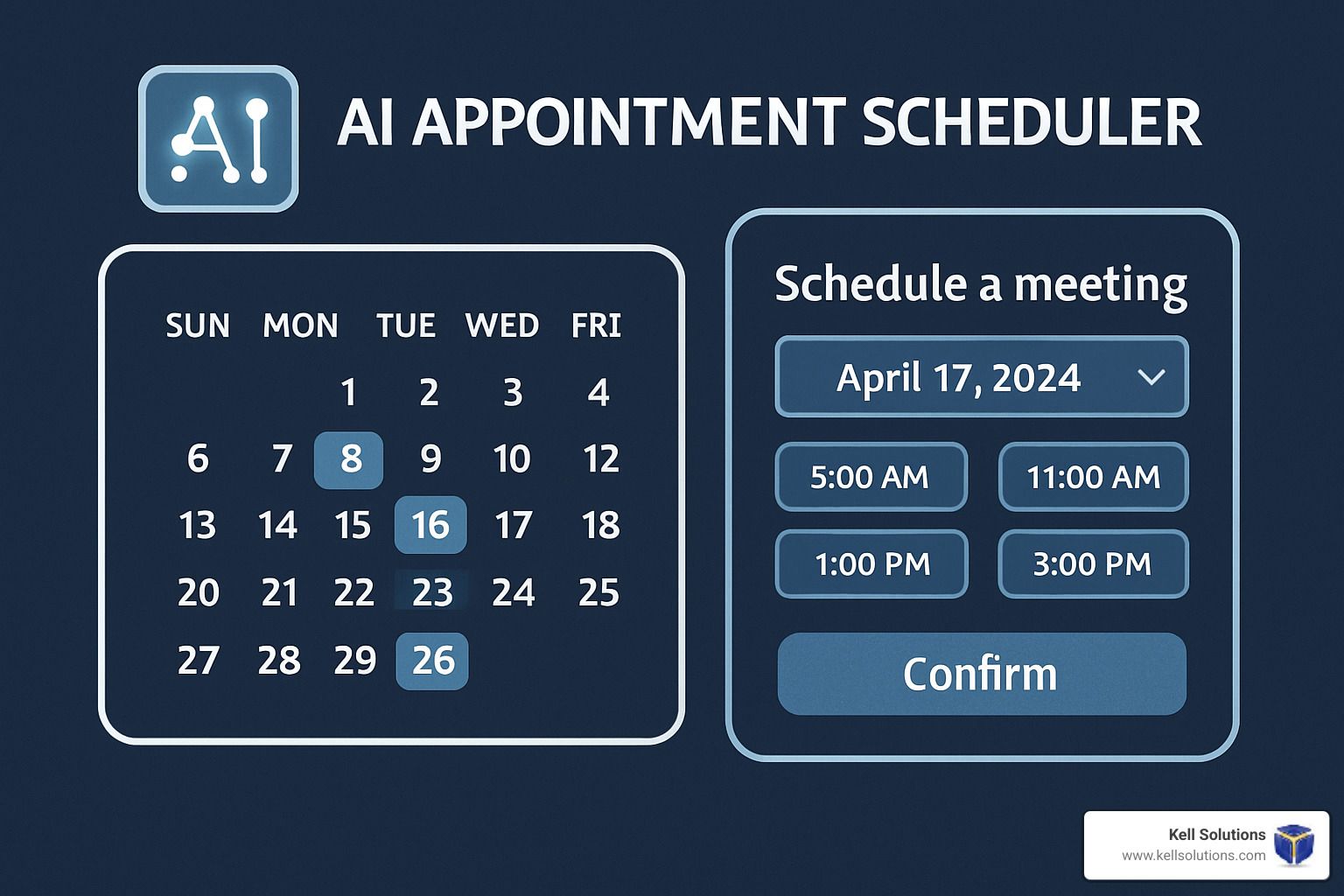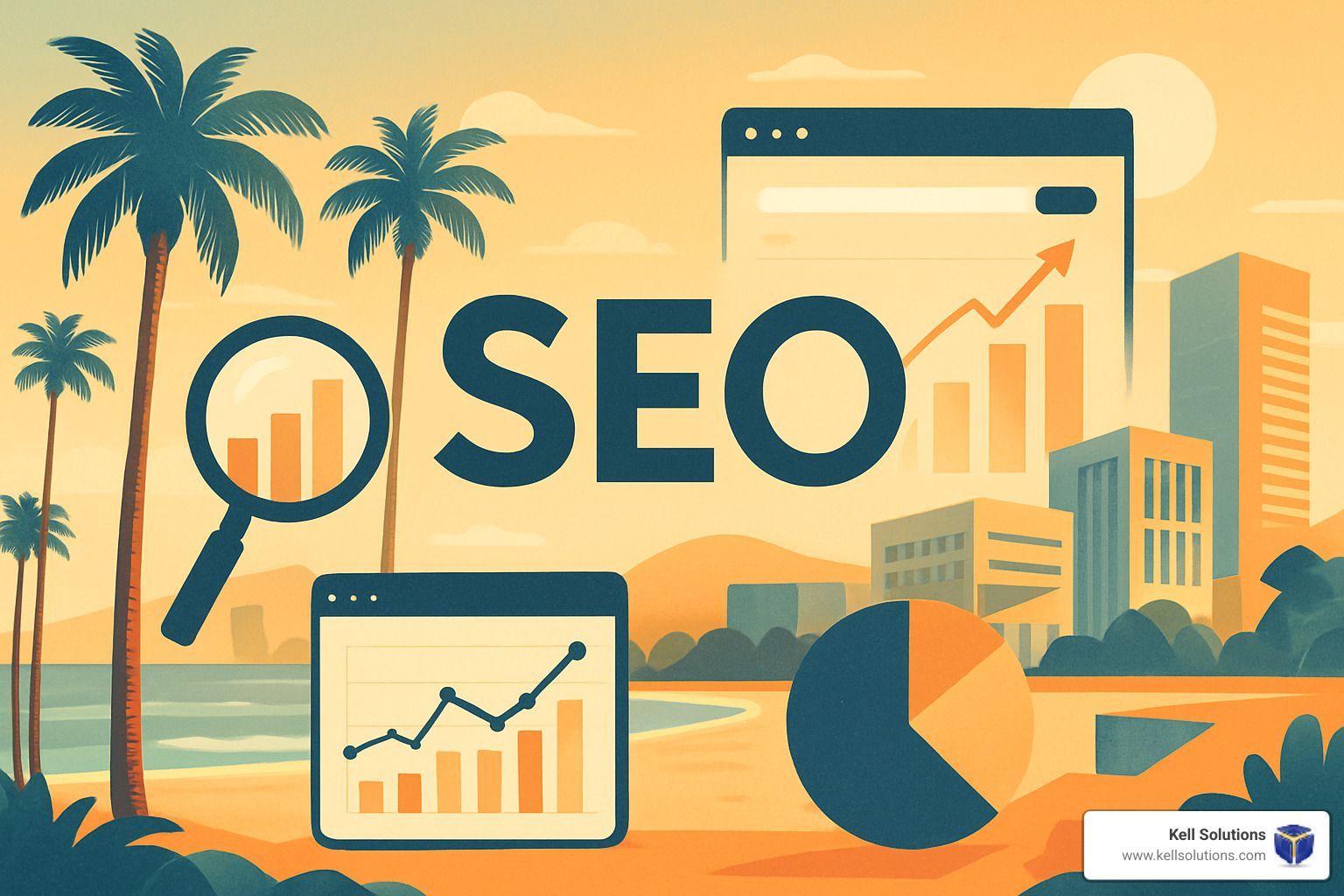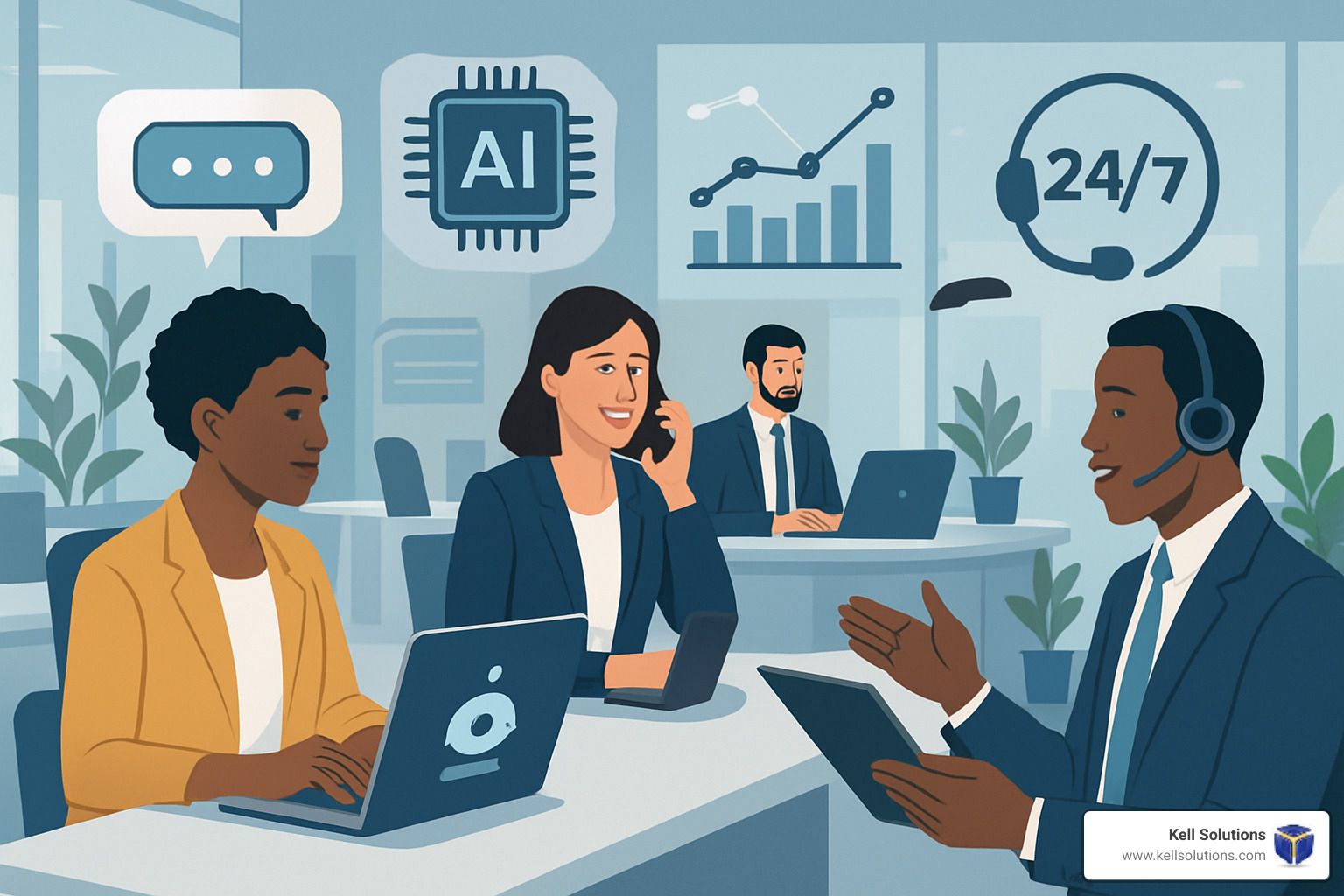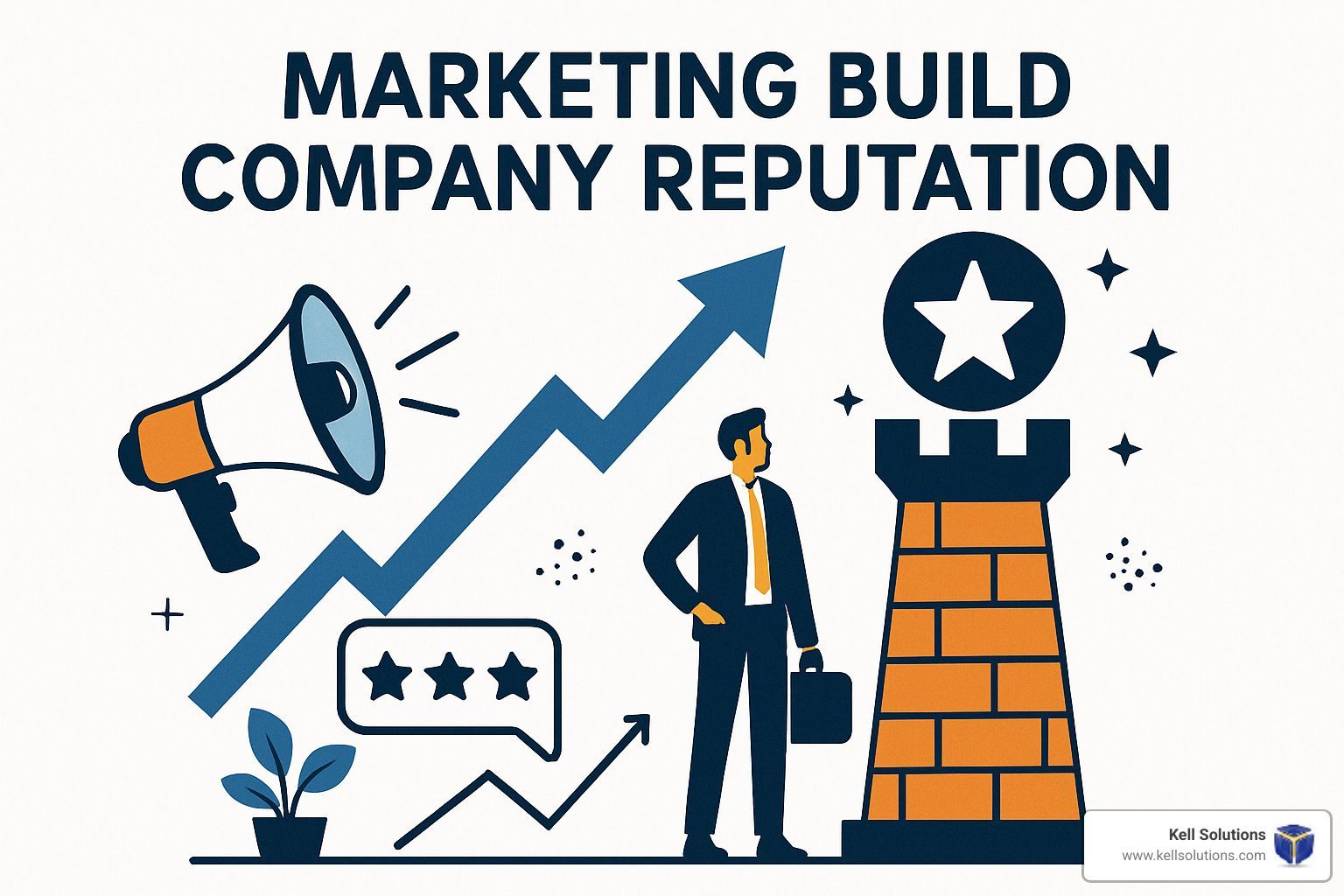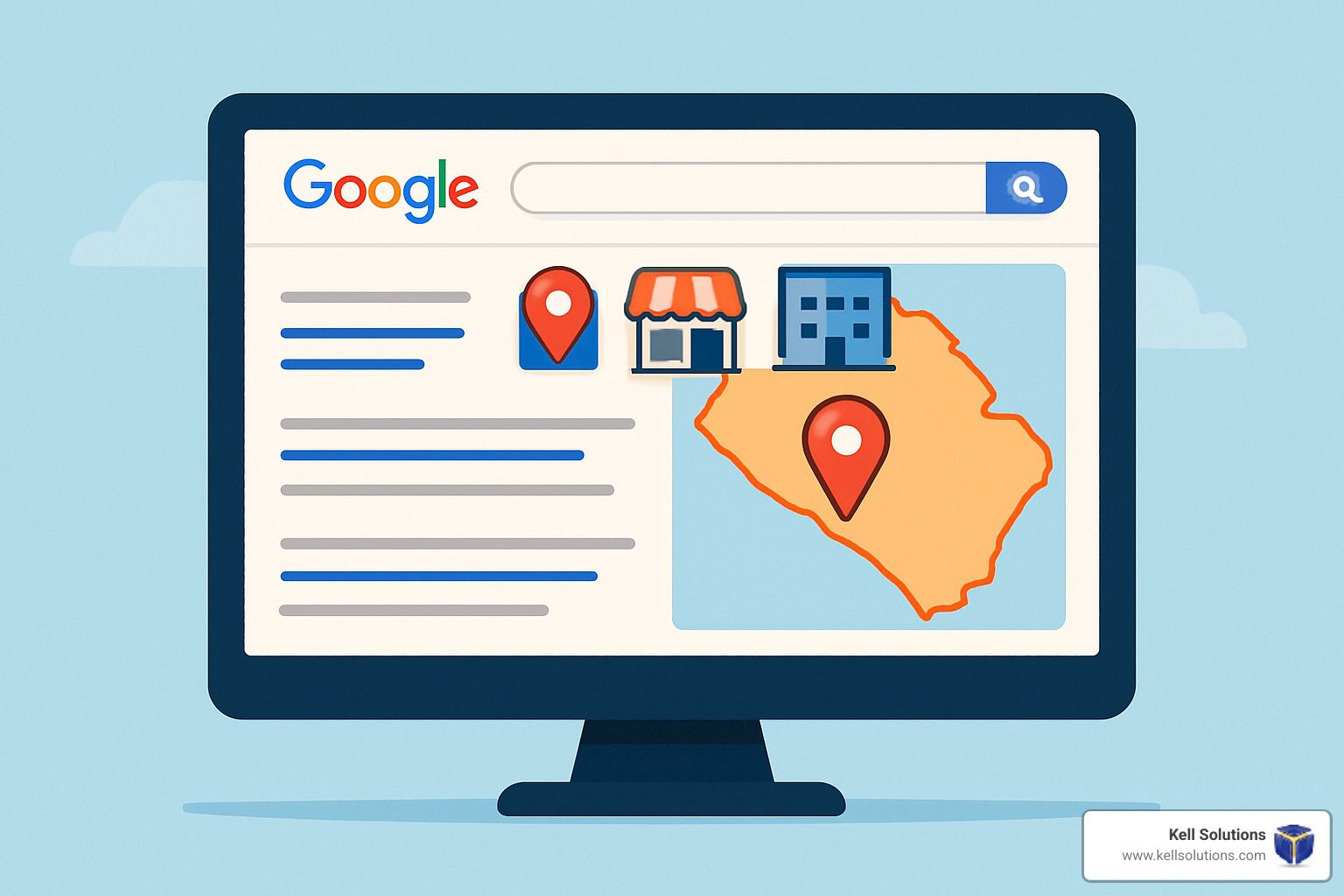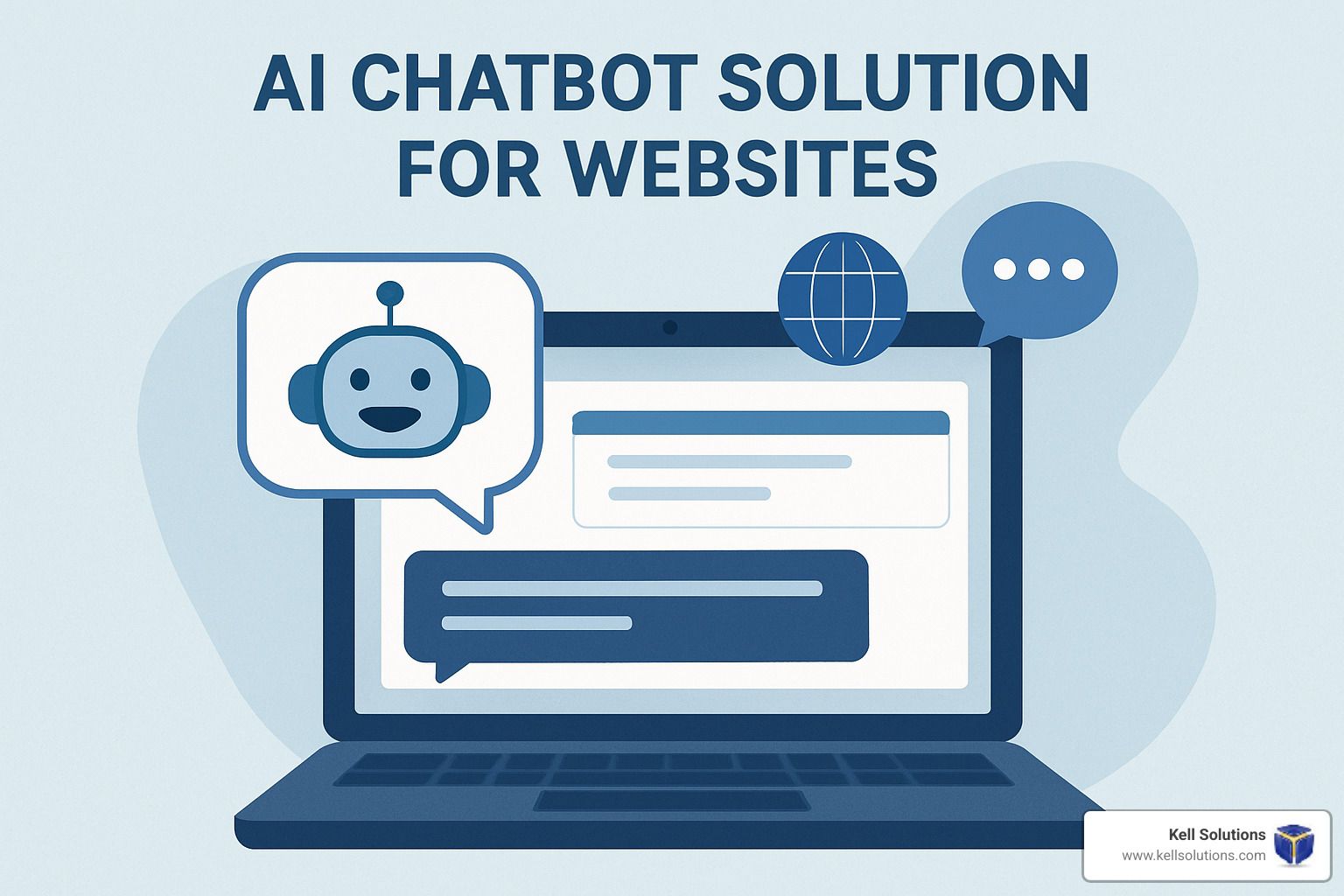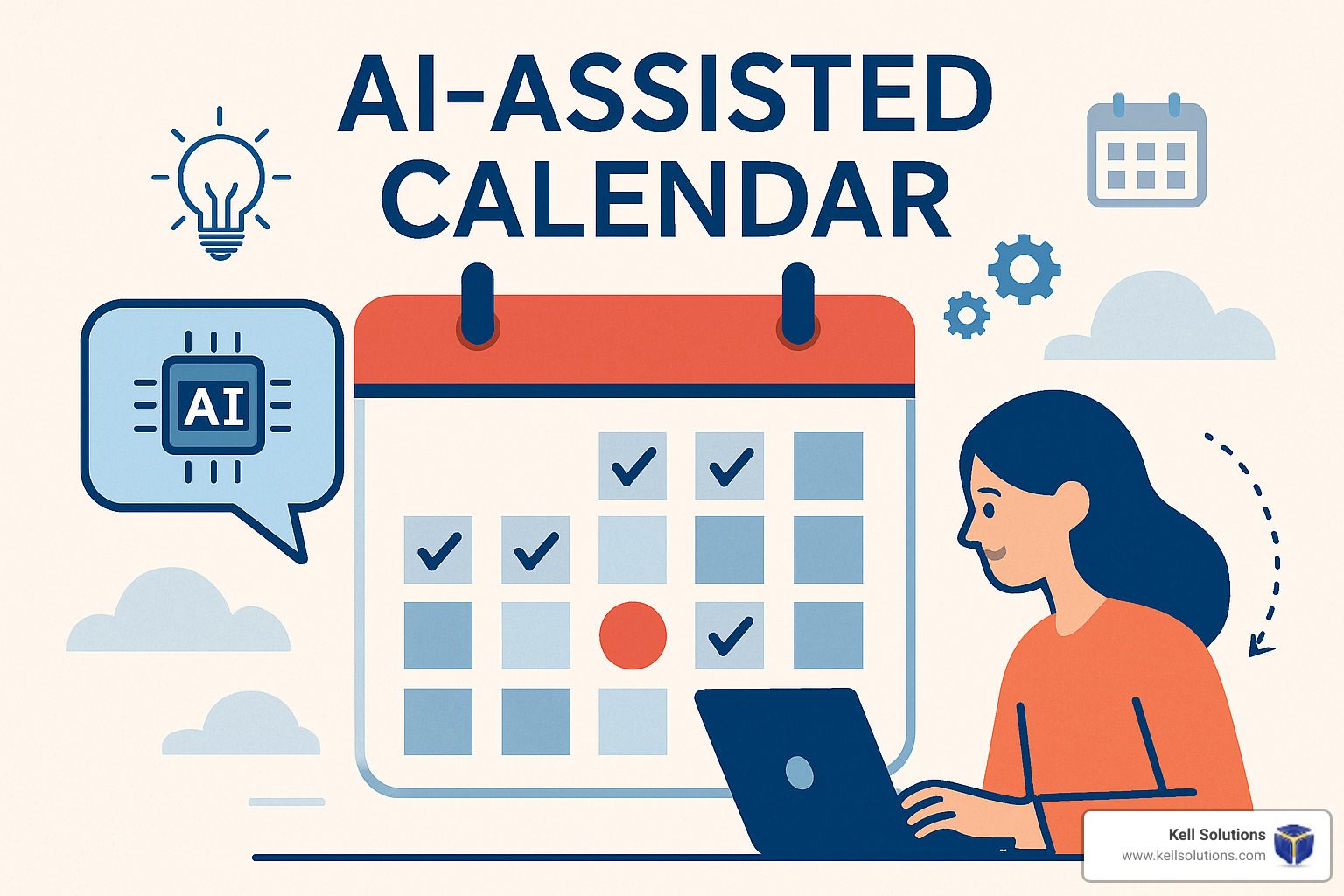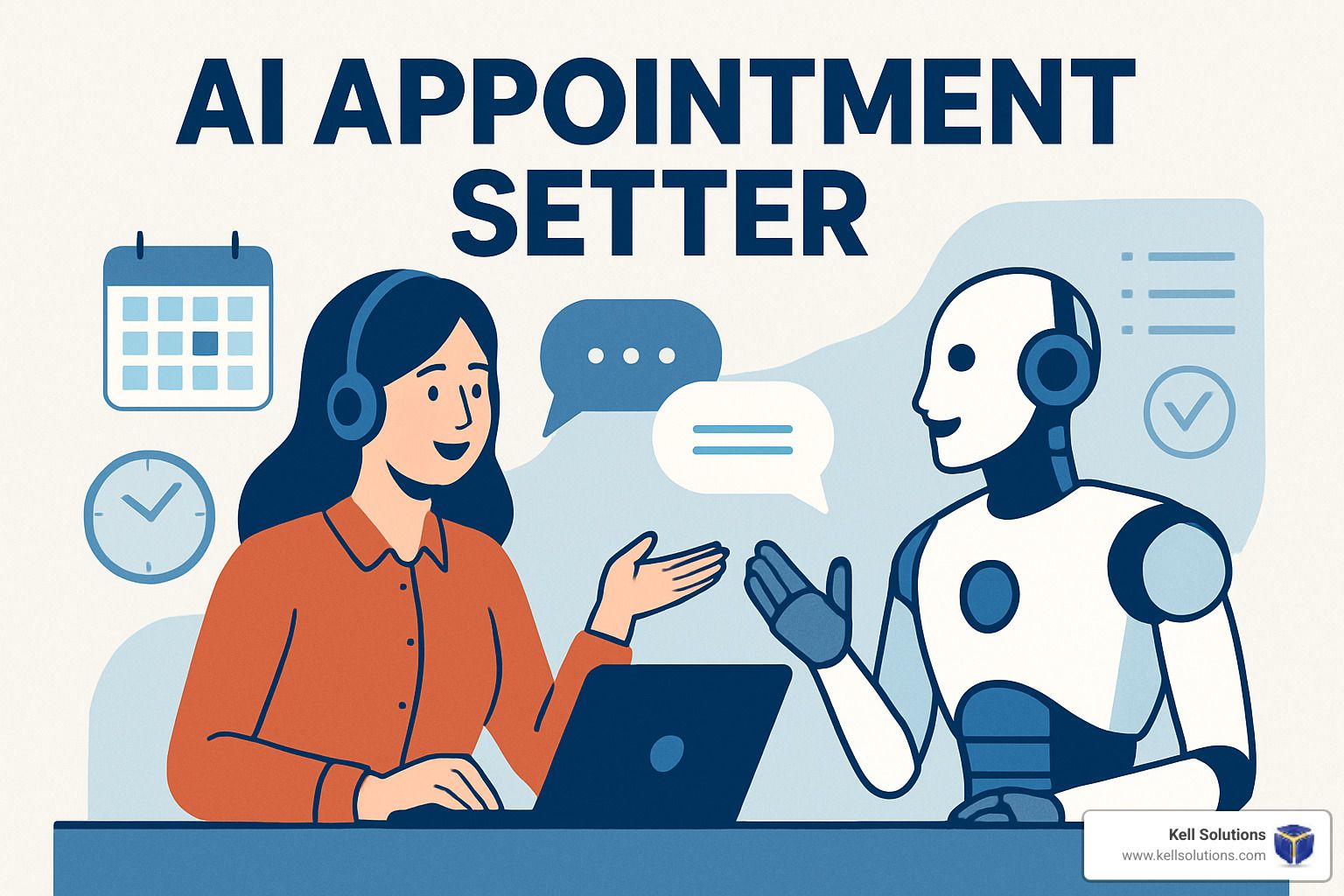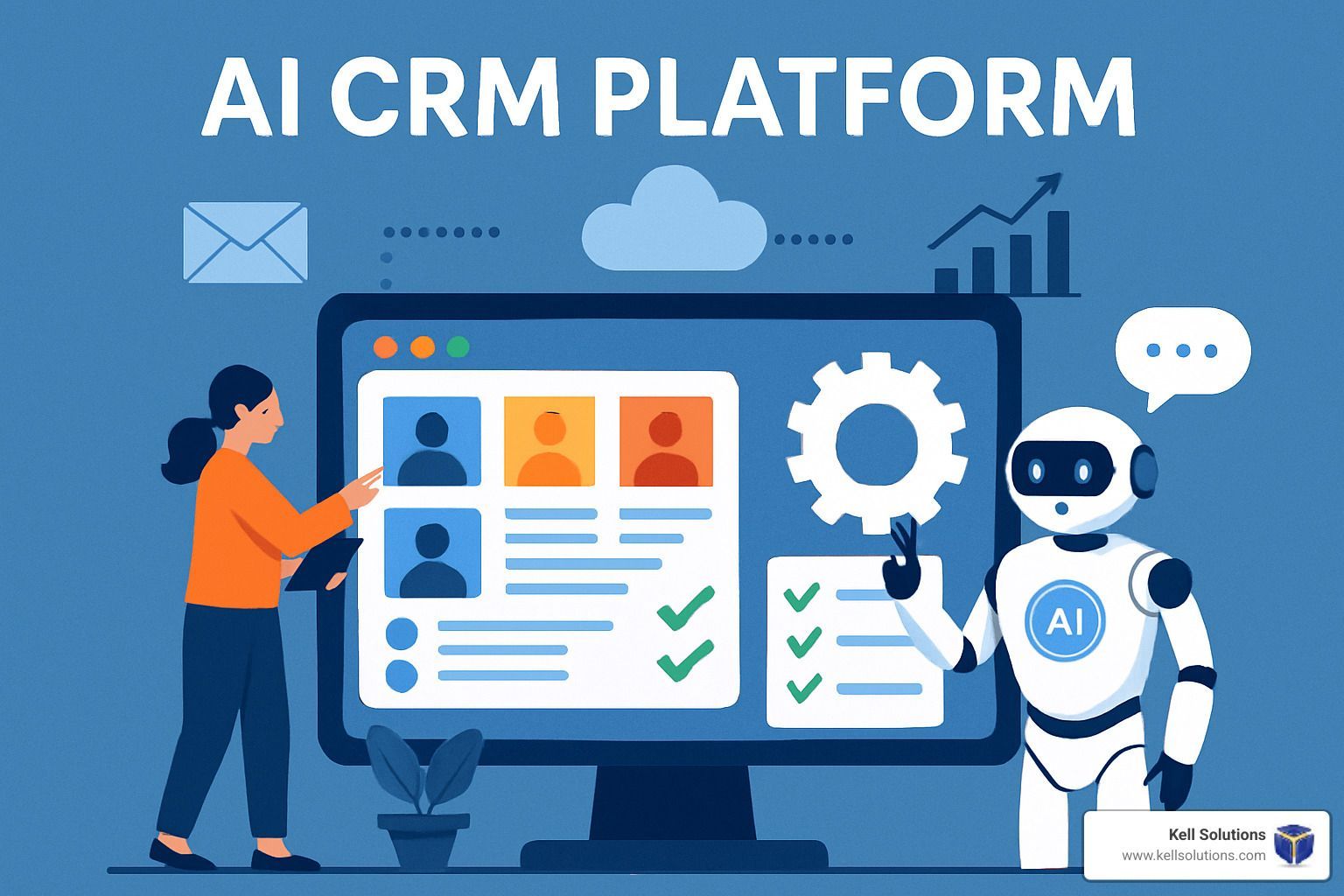Orange County Home Services Fractional CMO Strategy for AI Revolution Success
How Orange County Home Services Companies Are Winning with AI-Powered Marketing Led by Fractional CMOs

Key Takeaways
- Orange County home service contractors utilizing fractional CMO services report 25-35% higher marketing ROI within 12 months compared to those using AI tools without strategic guidance.
- While 70% of home service professionals now use AI tools, most lack the strategic framework to transform these isolated tools into comprehensive growth systems.
- AI disruption is affecting 8-40% of website traffic for home services businesses, with 60% of Google searches now ending without clicks to external websites.
- Fractional CMOs provide strategic marketing leadership at 60-70% cost savings compared to full-time executives while orchestrating existing AI technologies into competitive advantages.
- Orange County Contractor Marketing is helping local businesses navigate this AI revolution with proven frameworks that maintain personal connection while maximizing technological efficiency.
The AI revolution isn't coming—it's already here, fundamentally transforming how Orange County home service contractors acquire customers. But there's a troubling disconnect: while contractors rush to adopt AI tools, most lack the strategic framework needed to truly capitalize on these technologies. This gap represents both an urgent threat and a massive opportunity for those who get it right.
AI Revolution Creating Massive Opportunities for Home Service Companies
AI is reshaping every aspect of how Orange County residents find and hire contractors. From voice search to AI-powered recommendation engines and automated customer service, these technologies are creating unprecedented opportunities to connect with clients more efficiently than ever before. The contractors who strategically harness these capabilities are seeing dramatic improvements in lead quality, customer acquisition costs, and operational efficiency. However, success requires more than just purchasing the latest tools—it demands a cohesive strategy that aligns these technologies with your business objectives.
The AI Adoption Gap Among Orange County Contractors
Over 70% of home service professionals now use AI tools in some capacity, yet most fail to transform these isolated applications into genuine competitive advantages. The problem isn't technology adoption—it's strategic implementation. Many contractors have invested in AI-powered scheduling tools, proposal generators, or chatbots, but these stand-alone solutions rarely deliver their full potential without proper integration into a comprehensive marketing ecosystem. This tactical approach to AI creates a dangerous illusion of progress while more strategic competitors quietly build sustainable advantages.
Why Most Companies Use AI Tools Without Strategy
The reasons for this strategic deficit are understandable. Most home service contractors excel at their craft but lack specialized marketing expertise. Their primary focus remains delivering quality services, not mastering complex marketing technology integration. Additionally, full-time marketing executives with AI expertise command salaries well beyond what most local contractors can justify, creating a seemingly impossible situation: you need strategic marketing leadership to compete, but can't afford the traditional solution. This exact predicament is what has made the fractional CMO model so compelling for Orange County's home service industry.
"The widespread adoption of AI tools among Orange County contractors represents tremendous progress in operational efficiency and technological sophistication. However, tactical tool adoption alone cannot deliver the strategic marketing advantages needed to thrive in today's increasingly competitive environment." - Orange County Contractor Marketing
What's at Stake for Your Business
The financial implications of failing to adapt strategically are staggering. Consider that AI disruption now affects 8-40% of website traffic for home services businesses, while 60% of Google searches end without any clicks to external websites. For a contractor generating $500,000 annually through web leads, this represents a potential revenue loss of $40,000-$200,000. Beyond immediate revenue threats, there's the compounding competitive disadvantage as strategically-guided competitors build increasingly sophisticated marketing systems that you'll struggle to match. This isn't just about staying current with technology—it's about business survival in an Orange County market being rapidly reshaped by AI.
What an Orange County Fractional CMO Actually Does for Home Services
A fractional Chief Marketing Officer provides executive-level marketing leadership on a part-time basis, bringing strategic direction that transforms disconnected AI tools into cohesive business growth systems. Unlike consultants who make recommendations then leave implementation to you, fractional CMOs take ownership of results while working directly within your business. For Orange County contractors, this model delivers the perfect balance: sophisticated marketing leadership without the prohibitive cost of a full-time executive.
Strategic Marketing Leadership vs. Tactical Implementation
The critical distinction between tactical and strategic approaches explains why some contractors thrive with AI while others merely survive. Tactical implementation focuses on individual tools and techniques: setting up a chatbot, creating automated email sequences, or optimizing for specific keywords. Strategic leadership, by contrast, begins with your business objectives and customer journey, then orchestrates technology to support that vision. A fractional CMO doesn't just help you adopt new AI tools—they ensure these technologies work together to create meaningful competitive advantages that drive measurable business results.
Cost Comparison: Fractional vs. Full-Time CMO
The financial advantages of the fractional model are compelling for Orange County contractors. While a full-time CMO with AI expertise typically commands an annual salary of $175,000-$250,000 plus benefits, fractional arrangements provide comparable strategic leadership for $4,000-$10,000 monthly. This translates to 60-70% cost savings while maintaining access to executive-level marketing expertise. For home service companies generating $1-5 million annually, this model hits the financial sweet spot—sophisticated strategic guidance without the enterprise-level expense.
Real Results from Orange County Companies Using This Model
Local contractors implementing fractional CMO strategies are seeing transformative results. One Orange County plumbing company increased lead volume by 42% within six months while reducing customer acquisition costs by 31%, directly attributable to their fractional CMO's AI implementation strategy. Another local HVAC contractor reversed a three-year revenue decline within just four months by strategically integrating their existing AI tools into a cohesive marketing system under fractional leadership. These aren't isolated success stories—they represent the typical outcomes when tactical AI adoption transforms into strategic implementation.
The 4 Critical AI Strategy Components You Need
Effective AI implementation requires four interconnected components that most contractors overlook when adopting technology piecemeal. Each element reinforces the others, creating a strategic framework that transforms individual AI tools into a comprehensive business advantage. For Orange County contractors, mastering these components represents the difference between merely using AI and genuinely leveraging it for sustainable growth.
1. Customer Journey Orchestration
Strategic AI implementation begins by mapping the complete customer journey from initial awareness through repeat business and referrals. A fractional CMO identifies the critical touchpoints where AI can enhance the customer experience while preserving the personal connection that distinguishes quality contractors. This might involve using AI-powered analytics to identify precisely when homeowners begin searching for services, deploying intelligent chatbots for initial qualification, and implementing automated follow-up systems that maintain engagement without feeling impersonal. The key difference from tactical approaches is comprehensive journey mapping that ensures each AI tool enhances rather than fragments the customer experience.
2. Technology Integration
Rather than recommending new tools, fractional CMOs focus on integrating existing AI capabilities into coordinated systems. This might involve connecting proposal-writing AI with customer relationship management systems, integrating scheduling tools with marketing automation platforms, or ensuring website chatbots seamlessly transfer information to sales teams. The strategic advantage comes not from individual tools but from their orchestration into a cohesive ecosystem where each technology amplifies the effectiveness of others. For Orange County contractors already investing in various AI solutions, this integration focus delivers significantly higher returns without requiring substantial new technology investments.
3. Performance Measurement Systems
You can't improve what you don't measure, yet most contractors lack comprehensive analytics systems to evaluate AI effectiveness. A fractional CMO implements unified measurement frameworks that track the complete customer journey across all channels and technologies. This means moving beyond vanity metrics like website traffic to focus on meaningful business outcomes: lead quality, conversion rates, customer acquisition costs, and lifetime value. For Orange County contractors, these measurement systems provide unprecedented visibility into marketing performance, enabling data-driven decisions about where to invest resources for maximum growth.
Effective measurement requires both technical implementation and strategic interpretation. Your fractional CMO should establish dashboards that provide real-time visibility into key performance indicators while regularly analyzing results to identify improvement opportunities. This combination of continuous monitoring and strategic analysis ensures your AI investments deliver measurable business impact rather than just operational efficiency.
4. Brand Consistency Across AI Channels
As AI tools proliferate across marketing channels, maintaining consistent brand voice becomes increasingly challenging. Chatbots, email automation, and AI-generated content must all reflect your unique value proposition and brand personality. Fractional CMOs develop comprehensive brand guidelines specifically for AI applications, ensuring technology enhances rather than dilutes your market positioning. For Orange County contractors competing in crowded markets, this brand consistency across AI touchpoints creates meaningful differentiation that generic implementation cannot match.
The most successful contractors maintain their distinctive character even as they embrace automation. Your fractional CMO should implement systems that ensure AI tools communicate with your brand voice, emphasize your unique strengths, and maintain the personal touch that built your reputation. This strategic approach transforms AI from a potential threat to your differentiation into a powerful amplifier of what makes your business special.
How AI is Changing Local Search for Contractors
Orange County's home services market faces unprecedented disruption as AI transforms how residents find and select contractors. Google's AI-powered search features now directly answer consumer questions without requiring clicks to contractor websites, while voice search and AI assistants increasingly influence which service providers even enter consideration. These changes aren't theoretical future concerns—they're already dramatically reshaping customer acquisition in ways that demand immediate strategic response.
Google's AI Overviews Impact on Traditional SEO
Google's AI Overview feature represents perhaps the most significant threat to contractor visibility in decades. These AI-generated answer boxes appear above traditional search results, providing homeowners with immediate information that often eliminates the need to visit contractor websites. For Orange County businesses that have invested heavily in traditional SEO, this fundamental shift requires completely new strategies. Your fractional CMO must reorient your content strategy to position your business as an authoritative source that Google's AI will reference, rather than simply optimizing for website clicks that increasingly never materialize.
The Disappearing Website Click
The statistics are alarming: 60% of Google searches now end without clicks to external websites as users get information directly from AI-generated results. For Orange County contractors, this represents a fundamental threat to traditional lead generation models built around driving website traffic. This "zero-click" reality means contractors must adapt their digital presence to influence AI systems directly rather than just appealing to human searchers. A fractional CMO develops strategies to ensure your business information appears prominently within these AI-generated results, rather than being relegated to traditional listings that fewer potential customers will ever see.
New Search Strategies That Actually Work
Effective response to AI search disruption requires strategies most contractors haven't yet implemented. This includes structured data markup that helps AI systems understand your services, entity-based SEO that establishes your business as a recognized authority, and content specifically formatted to appear in AI-generated answers. For Orange County contractors, these technical approaches must be combined with hyperlocal reputation management, as AI increasingly prioritizes verified customer experiences over traditional website signals. Your fractional CMO should implement comprehensive strategies that position your business favorably within AI ecosystems while maintaining the authentic community connections that distinguish local service providers.
Financial Benefits of Strategic AI Implementation
The financial impact of properly implemented AI strategy extends far beyond operational efficiency. Orange County contractors who adopt fractional CMO guidance typically see 25-35% higher marketing ROI within the first year compared to those using AI tools without strategic oversight. This translates to tens or even hundreds of thousands in additional revenue while simultaneously reducing wasteful spending on disconnected marketing technologies.
25-35% Higher Marketing ROI Within 12 Months
This impressive ROI improvement comes from strategic alignment rather than simply adopting more advanced tools. When AI implementations focus on business objectives rather than technological capabilities, every dollar invested works harder toward meaningful outcomes. For example, one Orange County roofing contractor reallocated their existing marketing budget under fractional CMO guidance and increased qualified leads by 47% within six months—without spending a single additional dollar on technology. The difference came from strategic orchestration of their existing AI tools into a cohesive system focused on attracting ideal customers rather than generating maximum leads.
Strategic AI implementation also creates compounding returns that tactical approaches cannot match. As your fractional CMO builds integrated systems, each component enhances the effectiveness of others, creating accelerating results over time. This explains why Orange County contractors typically see good results within months but exceptional performance after the first year of strategic implementation.
60-70% Cost Savings vs. Traditional Executive Hiring
The fractional model delivers these superior results at a fraction of traditional executive costs. While full-time CMOs with AI expertise command salaries starting at $175,000 plus benefits and overhead, fractional arrangements typically cost $4,000-$10,000 monthly depending on company size and scope of responsibilities. This represents 60-70% cost savings while maintaining access to executive-level strategic guidance—a particularly compelling advantage for Orange County contractors operating on tight margins in competitive markets.
Beyond direct compensation savings, the fractional model eliminates recruitment costs, benefits expenses, and the financial risk of an executive hire that doesn't work out. This financial efficiency means even modest-sized Orange County contractors can access sophisticated marketing leadership previously available only to much larger competitors.
Customer Acquisition Cost Reduction Case Study
"One Orange County plumbing company reduced their customer acquisition cost from $312 to $187 within five months of implementing a fractional CMO strategy—a 40% improvement that added approximately $114,000 in annual profit without increasing their marketing budget. The difference came from strategic integration of their existing AI tools rather than investing in new technology."
This case exemplifies the typical financial impact of transforming from tactical to strategic AI implementation. The contractor already had invested in AI-powered scheduling, customer communication, and advertising tools, but these operated as isolated systems. Their fractional CMO integrated these existing investments into a cohesive customer acquisition ecosystem, dramatically improving efficiency without requiring substantial new technology spending.
90-Day Implementation Roadmap for Success
Successful transformation from tactical AI adoption to strategic marketing systems requires structured implementation that most contractors cannot execute independently. Fractional CMOs typically follow 90-day implementation frameworks that balance immediate improvements with long-term strategic development. This phased approach delivers quick wins to build momentum while establishing the foundation for sustainable competitive advantages.
Phase 1: Assessment and Strategy (Days 1-30)
The first 30 days focus on comprehensive assessment of your current marketing technology, customer journey, competitive positioning, and growth opportunities. Your fractional CMO conducts a thorough audit of existing AI tools, identifying integration opportunities and performance gaps. This phase includes stakeholder interviews, customer journey mapping, competitive analysis, and technology assessment to establish baseline performance metrics. The deliverable is a comprehensive strategic plan that aligns AI implementation with your specific business objectives and market position.
During this phase, your fractional CMO will also identify immediate optimization opportunities—quick wins that can generate improved results while longer-term strategic initiatives develop. These might include fixing broken conversion paths, improving customer data integration between existing systems, or resolving brand inconsistencies across AI touchpoints.
Phase 2: System Integration (Days 31-60)
The second month focuses on executing the strategic plan by integrating existing AI tools into cohesive systems. This typically begins with customer data unification to create a single source of truth across all platforms. Your fractional CMO implements integration between previously disconnected technologies, establishes comprehensive measurement frameworks, and develops consistent brand guidelines for AI applications. The emphasis remains on maximizing existing investments rather than adding new tools, with particular attention to creating seamless customer experiences across all touchpoints.
During this phase, you'll also see implementation of the new strategies developed to address AI search disruption, including structured data markup, entity-based SEO approaches, and content specifically formatted for AI-generated answers. These technical implementations lay the groundwork for improved visibility in increasingly AI-dominated search environments.
Phase 3: Scaling and Optimization (Days 61-90)
Once integrated systems demonstrate effectiveness, your fractional CMO helps scale successful approaches while continuously optimizing performance. This involves implementing advanced analytics to measure system performance, testing different AI configurations, and refining strategies based on real-world results. By day 90, you should have fully integrated marketing systems that leverage AI technologies toward specific business objectives, with clear performance metrics demonstrating improved results across the customer journey.
This phase also establishes ongoing optimization protocols that enable continuous improvement beyond the initial 90-day implementation. Your fractional CMO will develop dashboards, reporting structures, and review processes that ensure your marketing systems continuously adapt to changing market conditions and technological capabilities.
What Results to Expect at Each Stage
Expectations should be calibrated to the implementation timeline. During the first 30 days, expect improved clarity and strategic direction rather than dramatic performance improvements. By day 60, you should see initial integration benefits including improved lead quality, more consistent customer experiences, and enhanced visibility in AI search environments. The full financial impact typically emerges around day 90, when integrated systems begin delivering compounding benefits that tactical approaches cannot match. For most Orange County contractors, this translates to 15-20% performance improvements by day 90, with the full 25-35% ROI enhancement developing over the subsequent six to nine months as systems mature.
Finding the Right Fractional CMO Partner in Orange County
Not all fractional CMOs possess the specialized expertise needed to implement effective AI strategies for home service contractors. The right partner combines industry-specific knowledge with proven experience implementing AI-driven marketing systems. For Orange County contractors, local market understanding represents another critical qualification that national providers often lack. Orange County Contractor Marketing specializes in providing fractional CMO services specifically designed for local home service companies navigating the AI revolution.
Essential Experience and Qualification Markers
Look for demonstrated experience implementing integrated AI strategies rather than just using individual technologies. Your fractional CMO should provide case studies showing measurable business improvements from strategic implementations, not just technical capabilities. Verify they understand both the strategic and technical aspects of AI implementation, as the most common failure point occurs at the intersection of business strategy and technological execution.
The ideal partner will also demonstrate expertise in measurement and analytics, as effective AI implementation requires sophisticated performance tracking. Ask potential partners how they measure success and what specific metrics they track for home service contractors. Their answer should emphasize business outcomes (revenue, profit, customer acquisition costs) rather than vanity metrics like website traffic or social media engagement.
Home Services Industry Knowledge Requirements
Generic marketing expertise isn't sufficient for home service contractors facing industry-specific challenges. Your fractional CMO should understand the unique customer journey for home services, including the specific triggers that prompt homeowners to seek contractors and the decision criteria they use. This specialized knowledge enables development of AI strategies that address industry-specific pain points rather than generic marketing approaches.
Industry expertise also ensures your fractional CMO understands the operational realities of home service businesses. They should recognize the seasonal fluctuations, cash flow considerations, and workforce challenges that influence marketing strategy for contractors. Without this contextual understanding, even technically sound AI implementations may fail to deliver practical business value.
Additionally, your partner should demonstrate specific knowledge of how AI is transforming home services marketing. This includes understanding emerging search behaviors, changing customer expectations, and competitive dynamics unique to contractors. Ask potential partners specifically how AI is reshaping customer acquisition for home service businesses and evaluate whether their response reflects genuine expertise or generic observations.
Questions to Ask Before Hiring
Before engaging a fractional CMO, ask specific questions to verify their capabilities match your needs. Request concrete examples of how they've helped similar contractors implement AI strategies that delivered measurable business results. Ask how they measure success and what specific metrics they track for home service businesses. Inquire about their process for integrating existing technologies rather than simply recommending new tools.
Discuss their understanding of the Orange County market specifically, including local competitive dynamics and customer behaviors. Generic strategies rarely succeed in our unique environment, so local knowledge represents a critical qualification. Ask how they've helped other local contractors address the specific challenges of AI disruption in search and customer acquisition.
Finally, request a clear explanation of their implementation process, timeline, and expected outcomes. The right partner will provide a structured approach with specific milestones and measurable results at each stage. Vague promises or excessive focus on tools rather than business outcomes should raise immediate concerns, especially in a rapidly changing environment like the AI search disruption impacting Orange County's home services market.
The ROI Revolution Imperative
For Orange County contractors, the AI revolution represents both unprecedented threat and extraordinary opportunity. Those who continue using AI tools tactically will increasingly struggle against competitors who implement strategic systems that deliver superior customer experiences and operational efficiency. The choice is clear: continue using AI tools tactically and compete primarily on price and operational efficiency, or invest in fractional CMO services that deliver measurable ROI while building sustainable competitive positioning. The contractors who embrace this ROI revolution will not only survive Orange County's challenging market conditions—they will thrive in them. Orange County Contractor Marketing is here to help you navigate this transformation with proven strategies that deliver measurable results.
Frequently Asked Questions
As home service contractors explore fractional CMO strategies for AI implementation, several common questions emerge. These answers provide essential context for contractors evaluating this approach for their businesses.
How much does a fractional CMO typically cost for a home services company?
Fractional CMO services for Orange County home service contractors typically range from $4,000-$10,000 monthly depending on company size, complexity, and scope of responsibilities. This represents approximately 60-70% cost savings compared to hiring a full-time CMO with comparable expertise. Most arrangements involve 10-20 hours weekly of dedicated executive attention, though this varies based on specific business needs and implementation stage.
The investment should be evaluated against expected returns rather than viewed simply as an expense. Contractors typically see 25-35% higher marketing ROI within 12 months, meaning the fractional CMO often pays for themselves through improved performance while delivering sophisticated capabilities unavailable through other approaches.
"For a home services contractor generating $1-3 million annually, a typical fractional CMO arrangement runs $5,000-$7,000 monthly. Larger operations with more complex needs might invest $8,000-$10,000 monthly, while smaller contractors with focused requirements might start at $4,000 monthly." - Orange County Contractor Marketing
Most engagements begin with a 90-day implementation period followed by ongoing strategic guidance. This structure balances the need for comprehensive initial implementation with sustainable long-term strategic oversight. Some contractors eventually transition to quarterly strategy sessions once systems are fully established, though most maintain monthly guidance to ensure continuous optimization.
For many Orange County contractors, the financial calculation becomes straightforward: compare the $60,000-$120,000 annual investment against both the cost of hiring a full-time executive ($175,000-$250,000) and the expected performance improvements from strategic implementation (typically 25-35% higher marketing ROI).
What specific AI tools should home service contractors prioritize?
- Customer journey orchestration platforms that unify data across touchpoints
- Conversational AI tools for initial customer qualification and scheduling
- Predictive analytics systems for identifying high-value customer opportunities
- Content optimization tools specifically designed for AI-generated search results
- Marketing automation platforms with sophisticated personalization capabilities
However, the specific tools matter far less than their strategic implementation. Many contractors already have sufficient technology but lack the strategic framework to maximize their effectiveness. Your fractional CMO should focus first on integrating existing tools before recommending substantial new investments. The priority should be creating cohesive systems rather than adopting individual technologies, regardless of their apparent sophistication.
For most Orange County contractors, the greatest returns come from strategic orchestration of existing tools rather than continued investment in new capabilities. This approach delivers superior results while maximizing return on technology investments already made. Your fractional CMO should help you assess your current technology stack and identify integration opportunities before recommending additional tools.
Remember that AI tools themselves rarely create sustainable competitive advantages, as they're increasingly available to all competitors. The strategic implementation and integration of these tools creates the differentiation that drives superior business results. Focus first on strategy and integration, then on specific technology selection.
Finally, prioritize tools that enhance rather than replace the personal connection that distinguishes quality contractors. The most effective AI implementations augment human capabilities rather than attempting to eliminate them, particularly in relationship-driven businesses like home services.
How long before we see measurable results from a fractional CMO engagement?
Most Orange County contractors see initial performance improvements within 30-60 days, with significant financial impact typically emerging around day 90 of implementation. The full 25-35% ROI enhancement generally develops over 6-12 months as integrated systems mature and compounding benefits accumulate. This timeline reflects the reality that strategic implementation delivers sustainable advantages that increase over time, unlike tactical approaches that often produce quick but temporary improvements.
The specific timeline depends somewhat on your starting point. Contractors with substantial existing technology investments but poor integration often see faster results, as the primary opportunity involves connecting systems rather than building new capabilities. Those starting with minimal technology infrastructure may experience a longer ramp-up period but often achieve more dramatic long-term improvements as comprehensive systems develop.
Your fractional CMO should establish clear performance benchmarks and timeline expectations during the initial assessment phase. This typically includes identifying quick wins for immediate improvement while setting realistic expectations for more substantial strategic initiatives. The most successful engagements balance short-term performance enhancements with long-term competitive positioning.
Can smaller contractors with limited budgets benefit from fractional CMO services?
Absolutely. The fractional model specifically enables smaller contractors to access executive-level marketing leadership previously available only to much larger companies. For contractors generating $500,000-$1,000,000 annually, even modest performance improvements deliver substantial returns on investment. A 25% improvement in marketing ROI for a contractor generating $750,000 annually represents nearly $190,000 in additional revenue—far exceeding the investment in fractional leadership.
Smaller contractors often benefit disproportionately from strategic guidance, as they typically lack internal marketing expertise and have invested in disconnected tools without coherent strategy. For these businesses, the integration of existing capabilities often delivers dramatic performance improvements without requiring substantial new technology investments. Your fractional CMO should tailor their approach to your specific size and growth objectives, focusing on high-impact strategies appropriate for your current scale.
How is AI specifically changing marketing for plumbers, electricians, and HVAC contractors?
- Google's AI-generated search results now answer homeowner questions directly, reducing website clicks by up to 60% for some queries
- Voice search through smart home devices is changing how homeowners find emergency service providers
- AI-powered recommendation engines increasingly influence which contractors enter customer consideration sets
- Automated scheduling and qualification systems are becoming expected rather than exceptional features
- Predictive service models are enabling proactive maintenance offers that transform traditional reactive business models
For plumbers specifically, AI is dramatically changing emergency service customer acquisition. Voice searches for "emergency plumber near me" increasingly route through AI assistants that prioritize certain signals over traditional website optimization. Successful plumbers are implementing structured data markup and entity-based SEO strategies that position their businesses favorably within these AI ecosystems.
Electricians face similar challenges with changing search behaviors but additional opportunities in predictive service models. AI analysis of home electrical consumption patterns enables proactive maintenance offers that transform traditional reactive business models. Leading electricians are implementing integrated systems that leverage these predictive capabilities while maintaining the personal relationships critical to their businesses.
HVAC contractors perhaps face the most significant AI transformation, as predictive maintenance becomes increasingly sophisticated. Advanced systems now predict equipment failures before homeowners notice problems, creating opportunities for proactive service offers that dramatically improve customer satisfaction and lifetime value. The contractors seeing greatest success are those implementing integrated systems that connect these predictive capabilities with seamless customer communication and scheduling.
Across all specialties, the contractors achieving greatest success are those implementing cohesive strategies rather than disconnected technologies. Your fractional CMO should understand these trade-specific opportunities and challenges, developing customized approaches that address your particular business focus and customer needs.
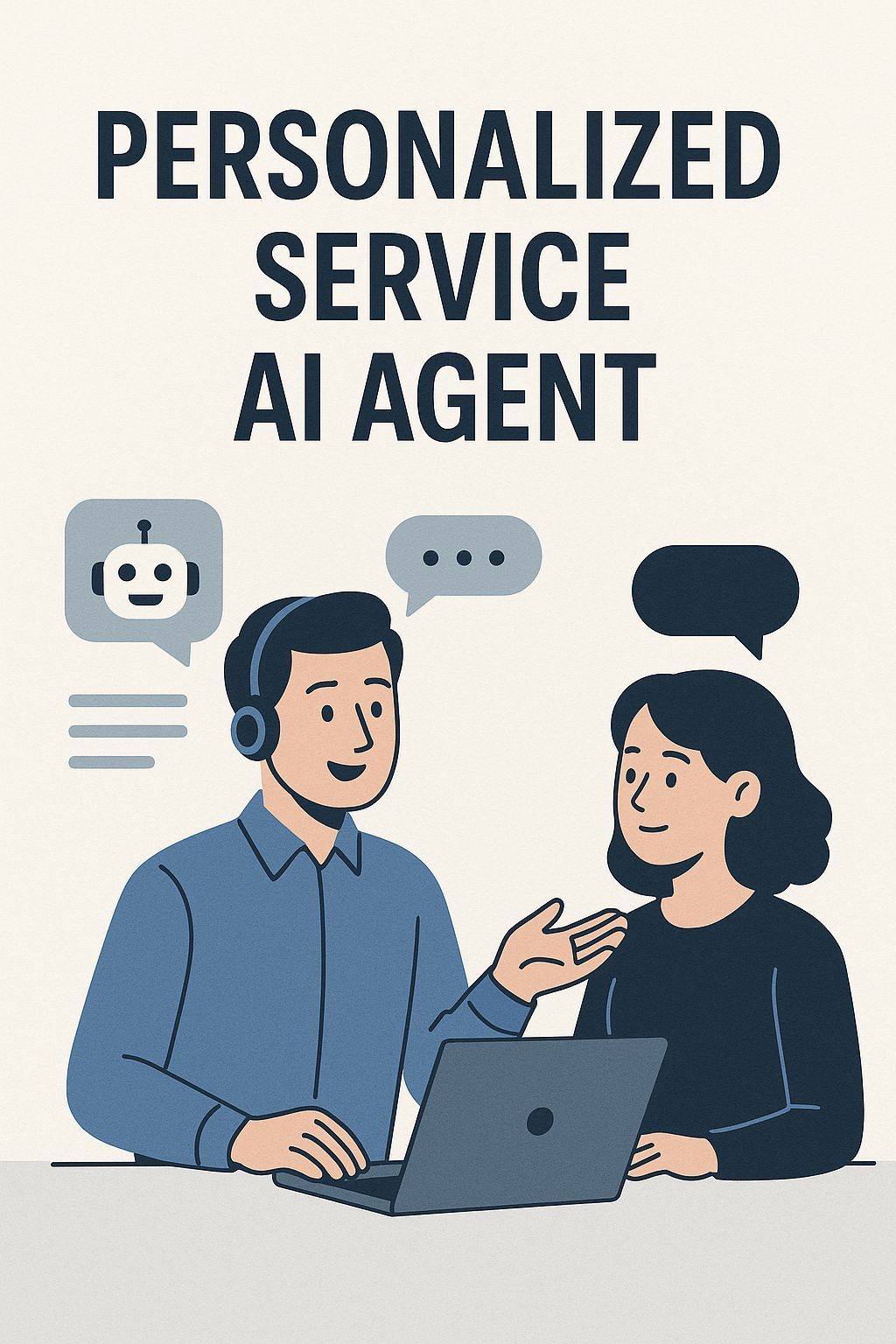
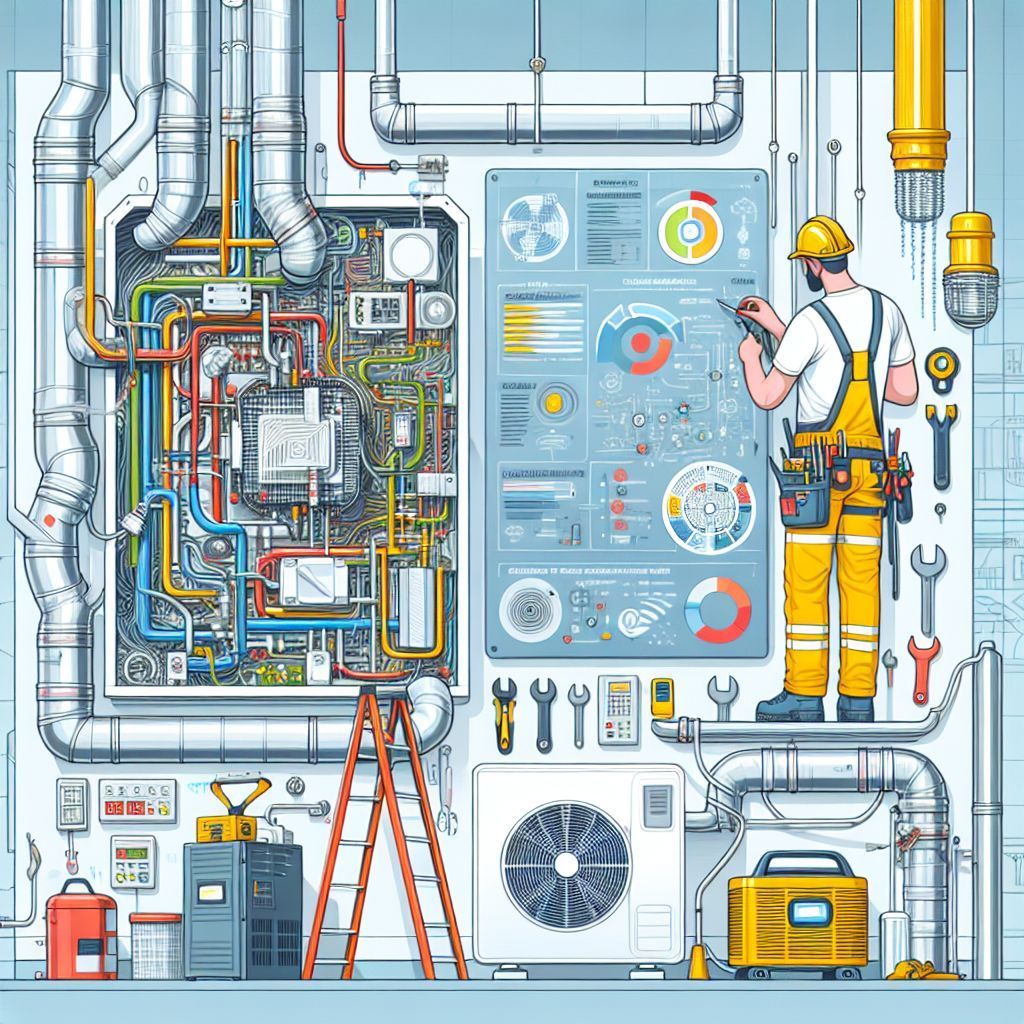
Orange County HVAC Google AI Overview Domination: 7 Proven Strategies to Capture Featured AI Results






